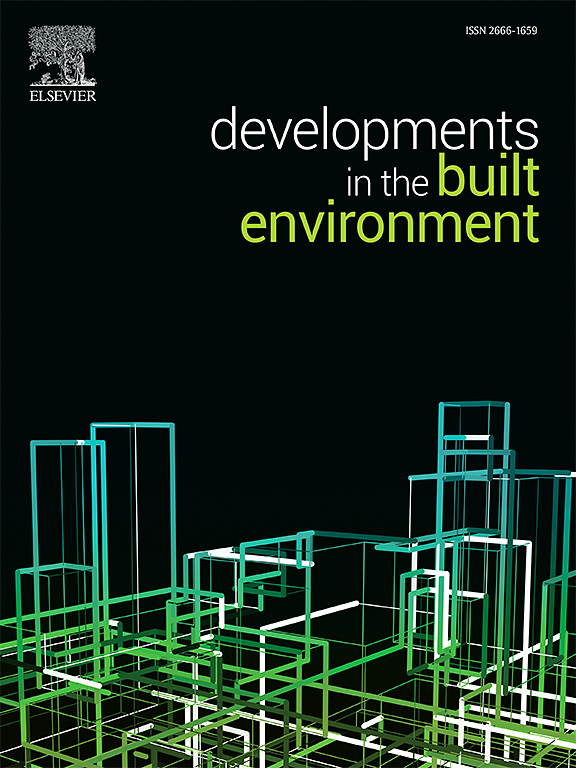利用挤压打印技术自动制造单弯曲碳纤维纤维增强混凝土外壳
IF 8.2
2区 工程技术
Q1 CONSTRUCTION & BUILDING TECHNOLOGY
引用次数: 0
摘要
混凝土壳提供了一个更可持续的替代简单的板,因为他们有效地利用混凝土在压缩。当使用轻质耐腐蚀材料(如碳)进行加固时,通过减少所需的混凝土覆盖层,可以创建极薄的外壳。然而,制造这些几何复杂的结构提出了巨大的挑战,需要大量的人力。本研究的重点是利用挤压混凝土打印技术自动制造单曲线混凝土外壳。本文介绍了一个可重用框架的数字化构建,并讨论了使用机械臂打印过程的路径生成。此外,它还详细介绍了用于实验测试的印刷和层压薄壁混凝土壳的生产。为了评估外壳性能并分析变形和裂纹模式,使用线性可变差动变压器和摄影测量系统进行了四点弯曲试验。这项有前途的工作为单曲面外壳的数字化生产做出了早期贡献,为更复杂、材料效率更高的碳纺织增强混凝土外壳结构铺平了道路。本文章由计算机程序翻译,如有差异,请以英文原文为准。
Automated fabrication of single-curved carbon textile-reinforced concrete shells using extrusion-based printing
Concrete shells offer a more sustainable alternative to simple plates due to their efficient use of concrete in compression. When reinforced with a lightweight, corrosion-resistant material such as carbon, it becomes possible to create extremely thin shells by reducing the required concrete cover. However, manufacturing these geometrically complex structures presents a significant challenge and requires substantial manpower.
This investigation focuses on the automated fabrication of single-curved concrete shells using concrete printing by extrusion. The article presents the digital construction of a reusable framework and discusses the path generation for the printing process using a robotic arm. Additionally, it details the production of printed and laminated thin-walled concrete shells for experimental testing. To assess shell performance and analyze deformations and crack patterns, a four-point bending test is performed using a linear variable differential transformer and a photogrammetric system.
This promising work makes an early-stage contribution to the digital production of single-curved shells, paving the way for more complex, material-efficient carbon textile-reinforced concrete shell structures.
求助全文
通过发布文献求助,成功后即可免费获取论文全文。
去求助
来源期刊

Developments in the Built Environment
Multiple-
CiteScore
7.40
自引率
1.20%
发文量
31
审稿时长
22 days
期刊介绍:
Developments in the Built Environment (DIBE) is a recently established peer-reviewed gold open access journal, ensuring that all accepted articles are permanently and freely accessible. Focused on civil engineering and the built environment, DIBE publishes original papers and short communications. Encompassing topics such as construction materials and building sustainability, the journal adopts a holistic approach with the aim of benefiting the community.
 求助内容:
求助内容: 应助结果提醒方式:
应助结果提醒方式:


